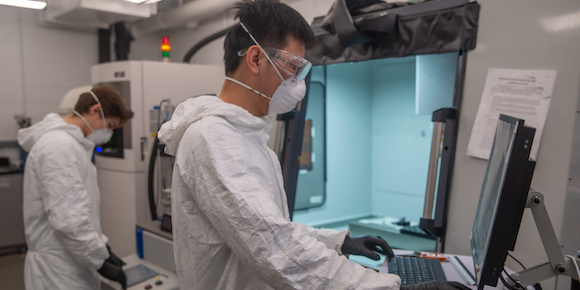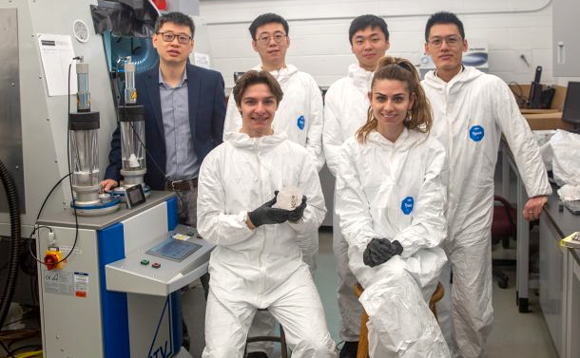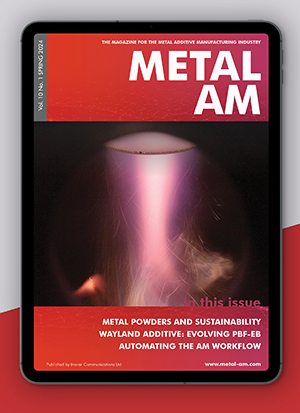University of Toronto establishes new metal Additive Manufacturing laboratory
March 15, 2023

A team of researchers from the Department of Materials Science & Engineering (MSE) at the University of Toronto (UoT), Canada, is working to advance the field of metal Additive Manufacturing at the university’s first metal AM laboratory.
“We are working to uncover the fundamental physics behind the Additive Manufacturing process, as well as improving its robustness, and creating novel structural and functional materials through its applications,” stated Professor Yu Zou, who leads the research team.
Zou’s metal Additive Manufacturing machines are designed to specialise in both Laser Beam Powder Bed Fusion (PBF-LB) and Directed Energy Deposition (DED), two metal AM techniques used in both academia and industry.
“Conventional manufacturing techniques are still well suited for large-scale industrial manufacturing,” added Tianyi Lyu, PhD candidate at U of T’s MSE. “But Additive Manufacturing has capabilities that go beyond what conventional techniques can do. These include the fabrication of complex geometries, rapid prototyping and customisation of designs, and precise control of the material properties.”
As well as developing its foundational knowledge of Additive Manufacturing, the U of T team is also applying novel experimental and analytical methods to gain a better understanding of the PBF-LB and DED AM processes. Currently, their research is focused on advanced steels, nickel-based superalloys and high-entropy alloys; they may explore titanium and aluminium alloys in the future.
“We are also working towards intelligent manufacturing. During the metal 3D printing process, the interaction between a high-energy laser and the material only lasts for a few microseconds. However, within this limited timeframe, multi-scale, multi-physics phenomena take place,” says Jiahui Zhang hD candidate at U of T’s MSE. “Our main challenge is attaining data to capture these phenomena. In our research, we have successfully customised specific machine learning methods for different parts of the metal additive manufacturing lifecycle.”

In the lab, high-speed infrared camera systems are integrated directly into the metal Additive Manufacturing machines. The team has also built an in-situ monitoring system based on the images taken by the machine to analyse and extract the key features of additively manufactured objects.
“With the development of computer vision, a well-trained deep learning model could automatically accomplish some basic tasks that human visual systems can do, such as classification, detection and segmentation,” added Zhang.
One problem the team identified with current Additive Manufacturing processes is on building a robust and reliable AM machine that can deliver consistent, high-quality parts. To this end, the team is actively working on the application of machine learning and computer vision to develop a fully autonomous closed-loop controlled AM machine that can detect and correct defects that would otherwise emerge in AM parts. Professor Zou believes that implementing these systems will greatly widen the adoption of metal AM systems in the industry.
Since building up the lab’s metal AM capabilities, Zou and his team have established partnerships with government research laboratories, including National Research Council Canada (NRC), and many Canadian companies, including Oetiker Limited, Mech Solutions Ltd., EXCO Engineering and Magna International.
And in addition to novel research into Additive Manufacturing, Zou offers an AM course open to both undergraduate and graduate students.
“Metal 3D printing has the potential to revolutionise manufacturing as we know it,” stated Zou. “With robust autonomous systems, the cost of operating these systems can be dramatically reduced, allowing metal Additive Manufacturing to be adopted more widely across industries worldwide. The process also reduces materials and energy waste, leading towards a more sustainable manufacturing industry.”
Download Metal AM magazine

















